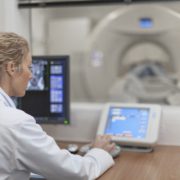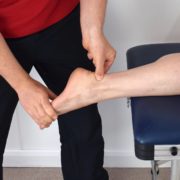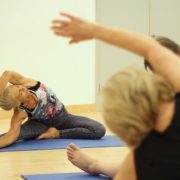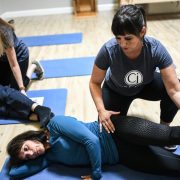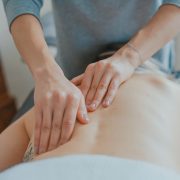Traveling for the Holidays? Tips to Ease Back and Neck Pain
Are you traveling for the Holidays? Unlike last year, there’s a lot more people getting out of town to see friends and family they didn’t get to see last year. Personally, I love to travel. But what I don’t love is the back and neck pain that often comes with it. The good news is you can prevent – or significantly minimize it – with tips to ease and back and neck pain during holiday travel. Whether you’re traveling by train, plane, or automobile…
Here are 5 tips to ease back and neck pain during Holiday travel:
1. Walk at Rest stops and Airports
Walking is not only great exercise but it’s well known for helping ease back and neck stiffness. Our bodies like to be upright and generally don’t like to be still and sitting for very long. If you’re flying somewhere this Holiday season, walk around the terminal while waiting for your flight instead of sitting. Don’t take the people mover – get those extra steps in and walk instead. If you’re driving somewhere long distance, make a point to stop along the way and be sure to get out and walk a little. Bonus – walking is great for hip and knee stiffness too.
2. Stay Hydrated
When it comes to back and neck pain – people don’t really think of hydration as something that makes a difference. The discs between our vertebrae need fluid to do their job – which is to provide cushion and shock absorption. They can get dry and brittle when not properly hydrated which can exacerbate back and neck pain. When you add travel to the mix, which involves a lot more sitting than you might do on a normal day, you put even more stress on your discs. So remembering to drink enough water when you travel is very important. Opting for foods like watermelon, lettuce, spinach and soups can help you stay hydrated as well as avoiding beverages that contain caffeine and alcohol.
3. Interrupt your Sitting
If you make a point to walk when you can, and drink plenty of water, interrupting your sitting is going to naturally happen and not be that difficult. As I mentioned already, our bodies were not meant to be sitting for prolonged periods and it’s one of the top reasons so many people suffer from unnecessary back and neck pain. When you sit, there is more pressure on your vertebral discs. But more than that, they start to weaken in certain areas from too much sitting – making you more susceptible for a disc bulge or herniation. Prolonged sitting also puts extra stretch on your muscles. Over time this contributes to them losing their elasticity – making them weaker and more painful – and easier to strain. My general rule is to always interrupt your sitting at least once every 30 min. This interruption acts as a reset button for your spine and helps to minimize the cumulative forces responsible for all of the problems I just mentioned.
4. Stretch in your Seat
If you absolutely can’t stand up and interrupt your sitting – the next best thing is to move and stretch in your seat. While it’s not as ideal as standing up – it’s certainly better than just sitting there. My two favorite stretches to do while sitting are: 1) the chin tuck and 2) thoracic extension.
To perform the chin tuck…
To stretch your thoracic spine…
5. Use a lumbar Roll
Our spine is made up of distinct curves for a very good reason. They are designed to balance forces and sustain shock – and it’s best if you can maintain them. When you sit, the curve in your lower back (lumbar spine) decreases, or sometimes disappears all together. While it’s perfectly acceptable to sit like this for small increments of time (remember the 30 min rule), your spine will not like this after several hours. Plus, your neck responds by changing it’s curve to a “forward head” position as well. One of the best things you can do is use a cylindrical lumbar roll to help maintain the natural curve in your lumbar spine. Place it right at your lower back any time you’re sitting and you’ll find that your back and neck have a lot less strain.
Give one more more of these tips to ease back and neck pain during holiday travel a try – you’ll see that easing your back or neck pain by even 30% could have a big impact on your travels.
Dr. Carrie Jose, Physical Therapist and Pilates expert, owns CJ Physical Therapy & Pilates in Portsmouth, NH. To get a free copy of her Guide to Easing Back Pain and Stiffness – click here.




